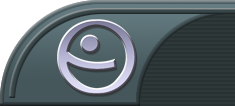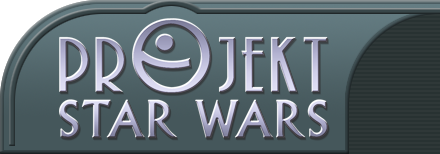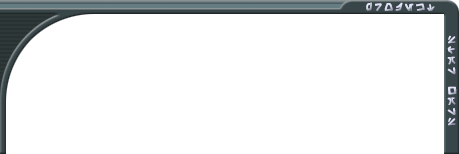Pippin und Merry flüchten aus dem Gemetzel in den Wald ... zu den Ents. Die Baumwächter um Treebeard bringen Ruhe in den Film. Treebeard selbst ist ein wunderbarer Charakter. Seine Augen, seine Nase, seine Stimme, alles wunderbar. Wenn man ihn als Ganzes sieht, wirkt er von allen Charakteren im Film am CGI-mässigsten. Es ist einfach schwierig, Blätter zu animieren und die Farbe grün ist für Animatoren wohl undankbar. Das ist jedoch nicht so schlimm, da der Wald selbst fantastisch aussieht und die Ents sehr schrullige, liebenswerte Gesellen sind. Wenn sie letztendlich gegen Isengard marschieren, kommt es zu meiner Lieblingsszene. "Nature Strikes Back" könnte man sagen. Wie Saruman entgeistert aus dem Turm schaut, während die Bäume seine Soldaten in den Boden trampeln, zaubert ein Lächeln aufs Gesicht. Und wenn die biblische Flut kommt, wirkt das regelrecht reinigend nach all dem Bösen und Faulen in dem Film. Wunderbare Szene. Wunderbarer Film ... das musste ich wieder mal sagen, sonst vergisst mans ja.
Somit bin ich im Vorbeigehen die Handlung durchgegangen. Ein paar Punkte sind noch offen, bevor ich zu ein paar Details komme. U.a. auch Gollum - ja, ich habe den Kleinen nicht vergessen. Frodo und Sam landen letztendlich in Osgiliath (Gondor), wo es u.a. zur zweiten Begegnung mit den fliegenden Nazgul (die erste war bereits in den Sümpfen!) kommt. Soweit ich mich entsinnen mag, kommen die Nazgul im Buch erst in Return of the King wieder vor. Aber ich könnte mich irren. Die Biester sind imposant, aber ich hatte das Gefühl, an diesem Punkt sei man gesättigt mit Monstern. Vielleicht hätte die grosse Enthüllung der "neuen" Nazgul doch für Buch drei warten können.
Nun also zu Gollum. Ich habe nie in meinem Leben eine bessere CGI-Figur gesehen. Man sieht an ein paar Orten, dass die Kreatur aus dem Computer kommt (v.a. am Wasser), aber vielfach ist man nur von den Socken. Die Details sind wahnsinnig - und vor unseren Augen wird aus einer Ansammlung Pixel eine wichtige Figur. Mir tut jetzt schon das Herz weh, wenn Leute ihn mit Jar-Jar oder Dobby vergleichen. Gollum ist zwar manchmal auch eine Nervensäge - aber auf andere Art. Er ist komplexer. Ich meine, wann hat man schon eine künstliche Filmfigur in schizophrenem Zwiegespräch gesehen? Über Minuten streitet Gollum quasi mit sich selbst. Entweder, man akzeptiert das, oder nicht. Wenn nicht, hat man eigentlich in einem Fantasy-Film nichts verloren. Und Gollum wächst einem ans Herz. Anders als Jar-Jar, der immer wie mehr nervt, gewöhnt man sich an Gollum. Es geht uns praktisch wie Frodo, der Gollum als Spiegelbild zu sehen beginnt, und darum zu ihm hält.
Gollum ist das CGI-Highlight. Andere Effekte, die ich liebe: Der Balrog. Immer noch mein Liebling. Die Cave-Trolls. Die Explosion bei Helm's Deep. Der Angriff auf Isengard. Treebeard. Und wow, natürlich die Olifanten. Die sind fantastisch. Man fragt sich, was sie in der Szene suchen (sie wirkt etwas "show-off"-mässig), aber Mensch, sind die geil. Generell kann man auch sagen, dass die Hintergründe brillant sind. Aus Neuseeland wird so wie schon bei Fellowship Mittelerde. Der Unterschied zu Attack of the Clones ist, dass ein Grossteil der Landschaft eben real ist und nur die speziellen Gebäude und Landschaftselemente Modelle bzw. CGI. Das gibt den Bildern die Tiefe, die sie brauchen. So bringt uns Jackson spielend nach Mittelerde. Wenn man The Two Towers wegen all dem Krieg und Säbelrasseln nicht mag, muss man dem Film immerhin zugestehen, ein guter Reiseführer durch Mittelerde zu sein ...
Die Musik. Schön. Das Titel-Thema gefällt mir immer besser. Das Rohan-Thema wirkt etwas ausgelutscht, ist aber OK. Der Schnitt: Am Anfang gewöhnungsbedürftig, doch zum Schluss höchst effizient. Die Schauspieler ... und da brauch ich wohl ein eigenes Kapitel.
Sean Astin ist mehr gefordert und macht seine Arbeit gut. Elijah Wood kommt fast nicht mehr vor, aber auch er ist gut. Die beiden anderen Hobbits haben weniger Jokes als in Fellowship. Das ist gar nicht so schlecht. John Rhys-Davies ist super. Er hat mehr Humor diesmal. The Two Towers darf nicht zu ironsch, geschweige denn selbstironisch werden, aber ein bisschen Humor ist gut. Orlando Bloom fand ich in Fellowship besser. Aber er ist auch hier gut. Viggo Mortensen ist ein Highlight. Dies ist beinahe sein Film. Dafür musste Ian McKellen abgeben. Er wirkt gezwungenermassen steifer. Er hat zwei, drei humorvolle Momente, doch damit hat es sich. Christopher Lee: Böse wie immer. Brad Dourif: Super besetzter Schleimer. Liv Tyler: Kommt kaum vor. Sie hat etwas zugenommen. Cate Blanchett: Hat einen Cameo-Auftritt von ein paar Sekunden.
Bernard Hill ist top. Manchmal hat man das Gefühl, er spiele wieder den Captain der Titanic und führe sein Schiff "Rohan" in den Untergang. Er ist es, der die Shakespeare-Vergleiche bei mir ausgelöst hat. Miranda Otto: Ich finde sehr gut, wie ihre Beziehung zu Aragorn aufgebaut wird. Sie ist fasziniert von ihm, merkt aber, dass er an Arwen vergeben ist. Es ist keine Dreiecksbeziehung (dafür gibt Jackson ihr zu wenig Raum), aber ein paar Blicke von Eowyn wirken Wunder. Sehr delikat. Die Tolkien-Puristen werden wohl v.a. an diesen Szenen etwas zu nörgeln finden, aber was solls. Und wenn wir gerade bei Änderungen sind: Der Film hört nicht da auf, wo das Buch aufhört. Nachdem Faramir Frodo und Sam (nach einer bewegenden Rede von Sam) gehen lässt, lassen die Hobbits sich von Gollum einen neuen Weg nach Mordor zeigen. Gollum ist hin- und hergerissen und wirft seine wacklige Freundschaft zu Frodo über Bord. Er sagt sich, jemand anderes solle die Hobbits töten. Sie solle sie töten. Kamera schwenkt nach oben. Ende ... "Sie" kommt also erst im dritten Film.
Jetzt geht mir bald die Luft aus. Was muss noch gesagt sein? Dass The Two Towers das Kino-Ereignis 2002 ist. Und dass viele ihn nicht mögen könnten. Mein Kollege sagte, Frauen werden mit dem Film nichts anfangen können. Das ist vielleicht ein wenig sexistisch, aber ich gehe in die selbe Richtung: Dieser Film ist für die Geeks (und da gibt es ja auch Frauen). Er ist ein episches Schlachtenepos mit ungemeiner Wucht, fantastischen Bilder, Mut ebenso zur Dreckigkeit (Bild) wie zur Poesie (Monologe). Es ist sicher kein leichter Film. Er ist vielmehr das böse Stiefkind, das aus Fellowship of the Ring entwachsen ist. Der eine kann nicht sein ohne den anderen. Und genau das ist ja das Geniale in der Trilogie. Der erste ist nicht nur Einleitung. Er führt zwar die Charakteren ein, hat aber auch einen anderen Sinn: Der des Gegenpols - des Gegenpols zu The Two Towers. Bereitet euch vor, erschlagen zu werden. The Two Towers. Danke Peter Jackson für diese Tortur










